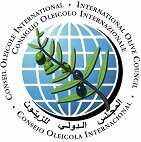The International Olive Council (IOC) has recently granted its recognition as an international germplasm collection to Italy’s largest national olive germplasm collection, located in the fields of Mirto Crosia and Rende in the region of Calabria.
Hosted by the Council for Agricultural Research and Analysis of Agricultural Economics (CREA, Consiglio per la ricerca in agricoltura e l’analisi dell’economia agraria), this collection is composed of 600 different olive varieties, 200 of which are authenticated and common to the Spanish collection. In fact, CREA now holds the second largest national olive germplasm collection in the world, the largest being in Spain.
The IOC’s network of olive germplasm collections – which span from all of the shores of the Mediterranean (from Spain and Italy to Morocco, Türkiye and Israel) and beyond, reaching Argentina – began in 1994 and have since become invaluable and instrumental epicentres of our shared heritage, both in terms of agrobiodiversity in a larger sense, and of olive trees in particular. These banks, which house many hundreds of olive tree varieties, serve as conservation and research centres of their plant material with a view to benefitting the scientific community. Through them, for instance, scientists are investigating on tolerant or resistant genotypes that are resilient to diseases like Xylella fastidiosa and Verticillium dhaliae. Also essential in this day and age is the information they provide regarding the olive tree’s resistance and countless attributes in the face of climate change and changing weather temperatures.
The IOC extends its most heartfelt welcome and congratulations to Italy and CREA’s international germplasm collection.
Articles on this important recognition have been published in the Italian press. You can read them here, here, here and here.










